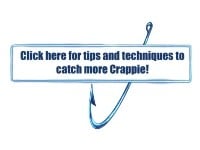As the ole country singer Hank Williams, Jr. says, “Are you ready for some football fish catching?” It’s called a feeding frenzy; bass & crappie go wild gorging up the shad that’s moved into these shallow creeks and flats.
Why do shad migrate? What we see is only one part of what’s driving the food chain causing this migration. Shad feed primarily on microscopic plant and animal life, phytoplankton and zooplankton. They’ll travel miles searching for plankton rich waters. Threadfin shad are more migratory than gizzard shad because of their choice of food. Threadfin are more surface-oriented than gizzard shad and they move in large schools just under the surface.
According to Colton Dennis, bass and crappie biologist for the Arkansas Game and Fish Commission, “Threadfin shad adults rarely exceed 5 to 6 inches but can reach a maximum size of 9 inches, whereas the gizzard shad adults are usually 10 to 16 inches long and reach a maximum size of 20 inches and 3.5 pounds,” Dennis said. “They are both pelagic (open-water) schooling fish, but the threadfin shad occupies the layer of water between the surface and the thermocline during most of the year,” Dennis said.
According to Dennis, “Gizzard shad become more bottom-oriented fish as they mature, seeking to consume more organisms associated with the bottom substrate rather than those found at the surface. Temperature also plays a role in where the shad will be found. Threadfin are especially temperate in nature. Temperatures dipping into the low 40s cause huge shad die-offs. Threadfin shad is found mostly in Southern waters from Florida to Texas and as far north as the southern part of Illinois. Gizzard shad are much more adaptable and have been found as far north as Canada, ranging from New Mexico to the East Coast.”
Because shad feed on plankton, they roam the open areas of the lake looking for food. Early year rains and runoffs bring nutrients to the lake, warming water temperatures and sunlight cause enormous plankton explosions in the lake’s open waters. This creates a plentiful source of food for shad. As summer passes and fall begins, nutrients in the main lake gets used up and falling temperatures slows plankton growth. Wind, dam control, and summer boat traffic causes this food source to become stirred up in the main portions of the lake. In the shallow creeks the plankton continues to grow, mainly because these areas don’t cool as fast as open water areas. Shad schools migrate into these shallow areas in search of food. This causes bass and crappie to be located in predictable places. These predators love to find ambush points where they can utilize the chance to load up on these schools of shad as they come through the area.
The old saying of “find the shad, you will find the fish” is not always accurate. Occasionally this works just the opposite. These creeks and coves hold millions of shad, far more than crappie and bass can eat. One way to resolve that matter is to find the spots that give bass and crappie a feeding advantage. Cover and structure give bass and crappie an excellent ambush perspective. A long shallow point with deep water on each side is a superb location to begin your search. Areas with a creek channel running through, grass beds along a creek, and creek bends are excellent choices this time of year.
We’ve discussed the shad migration in detail, however not all bass and crappie follow the shad migration. Some remain in their open water retreats. They have all they need, oxygen, comfortable temperatures and an ample supply of food. I wouldn’t abandon areas where you caught summer bass and crappie just because of the shad migration. The great thing is you have lots more areas to fish. When you find these fall fish, remember keep the net handy. Be Safe. Bernard - Magnolia Crappie Club




 Articles and Stories
Articles and Stories

















vBulletin Message